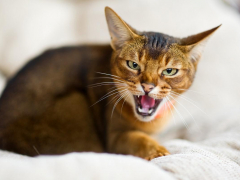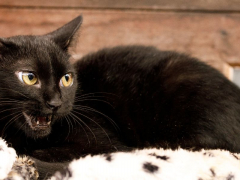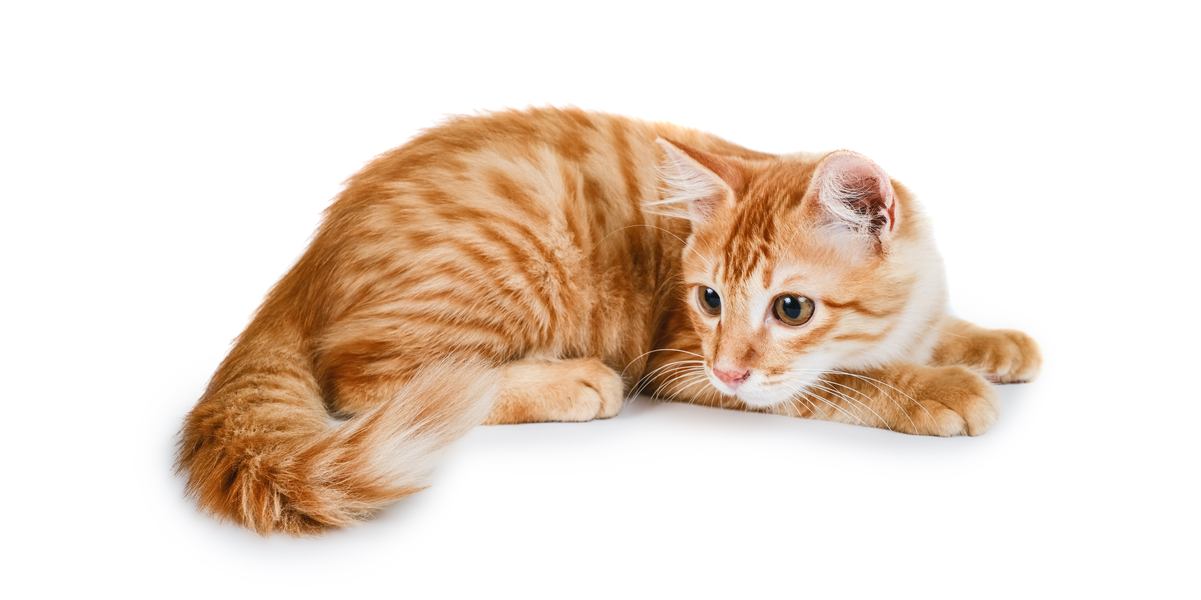
Tail chasing is common in dogs, however it’s not a frequent behaviour seen in adult cats.
Cats can have mad moments when boredom or night-time sets in, suddenly without any warning, their pant up energy will burst out and your cat will dash round the house with fully dilated pupils, either flick their tail or chase their tail in a circle.
Makes you wonder, is this a normal behaviour or is there a tale to a cat’s tail chasing?
8 Reasons Why Cats Chase Their Tails
There are plenty of reasons why cats chase their tail, let’s decipher why a kitten or a mature cat has the need to perform this behaviour, and should there be a cause for concern.
1. Kittenhood Is a Really Fun Time
Being a kitten is loads of fun, kittens get to play as well as practice their social and predatory skills plus they get to stalk, chase and wrestle their siblings.
Equally they become fascinated with any movable objects including their tail which resembles a prey encircling it just for fun. This is a normal behaviour which usually dissipates into adulthood.
2. Boredom and Lack of Activities
Unlike outdoor cats who get to explore, stalk and chase prey within the great outdoors, boredom quickly sets in among indoor kitties. Under-stimulated medium/high energy cats with no opportunities to express natural hunting behaviour with unused excess energy may entertain themselves through tail chasing, although it may seem funny at the time, avoid reinforcing the behaviour.
3. Stress Can Affect Your Cat’s Behaviour
Stress due to routine or environmental changes, addition of a new household member or pet along with inter-cat disputes in multi-cat homes can all affect your cat’s wellbeing.
Tail chasing or biting could also be how they relieve stress! To minimise boredom and anxiety, invest in interactive along with motorised toys, offer indoor sensory enrichment and leave your cat several objects filled with food scattered round the house.
4. Skin Conditions and Allergies
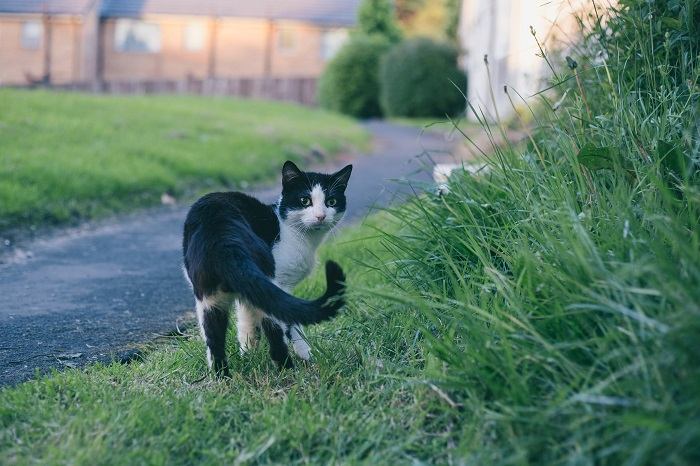
Conversely there are health reasons that will possess a cat to suddenly chase, scrape or lick their tail. Skin disease caused by environmental factors or food allergies can cause irritation and exacerbate the necessity to hunt and scratch their tail.
Skin disease treatment involves a combination of methodologies, anything from minimising allergen exposure to elimination diet trials together with medication administration. Consult your vet if your cat has abruptly started hounding plus itching their tail, overgrooming other body parts and its skin is inflamed.
5. Feline Hyperesthesia Syndrome
Moreover overgrooming and self-injury to the tail may be an indicator of Feline Hyperesthesia Syndrome (FHS). This is a rare and poorly recognized condition that manifests in bizarre behaviours that include skin twitching plus sudden bouts of intense grooming and self-mutilation, often of the tail and hind-feet.
FHS is a debilitating condition, especially in severe cases with mutilation of the tail. FHS isn’t simple to diagnose and difficult to remedy, treatment plan usually involves behavioural modification and personalized medication for each patient.
6. Obsessive Compulsive Behaviour
Did you know that cats can suffer from stereotypical and obsessive-compulsive disorders (OCD)?! Obsessive-compulsive conditions are normal behaviours performed repetitively by an animal which are out of context. Episodes often triggered by stress or anxiety.
Examples of OCD in cats include tail chasing, circling, over-grooming, barbering, self-mutilation, skin rippling, light/shadow reflection chasing, pica and object licking.
Moreover, latest research published in the Journal of Applied Animal Welfare Science on use and effects of laser pointers during play on cat behaviour determined that carers frequently using laser light pointers to play with their cats described significant more abnormal repetitive behaviours like spins, tail chases, chasing lights or shadows.
To minimise frustration including possible development of abnormal repetitive behaviour during play with laser sticks, let your cat ‘pounce and catch’ a physical toy at the end of the play session to complete the predatory behavioural sequence.
7. Cat Shaving Experience at the Groomer
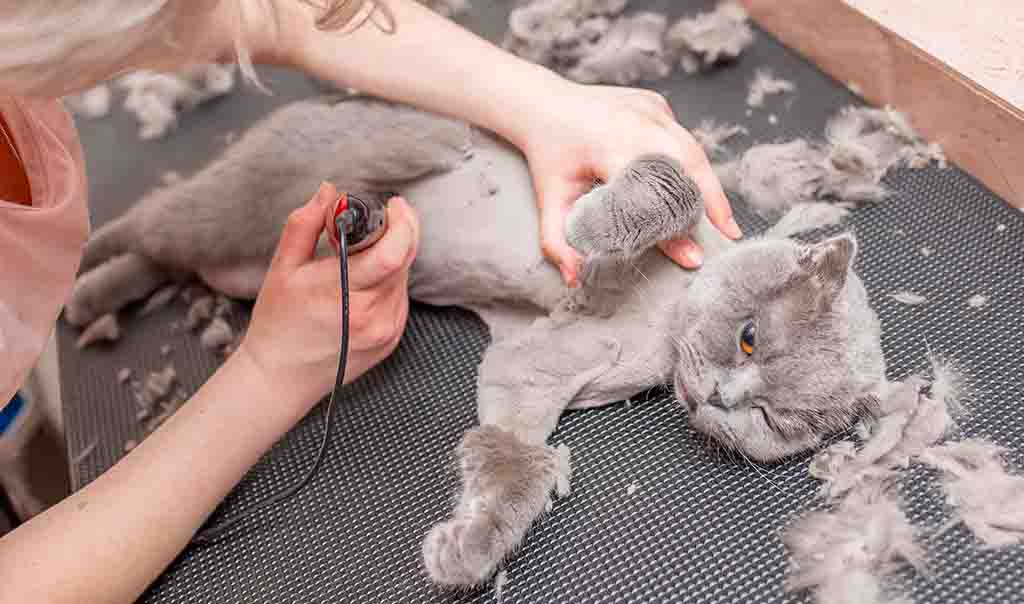
Shaving a cat is something that should be left to professional groomers.
This might sound peculiar, however from few personal accounts cats who got shaved at the pet groomer and the groomer shaved the entire tail, resulted in obsessive tail chasing, however when the groomer left the tail unshaved the chasing didn’t happen. Shaving isn’t a necessity and must be done by a grooming professional or a veterinarian to minimise cat distress.
8. Stud Tail
Lastly, the base of the tail is rich in sebaceous glands, when waxy secretions accumulate on the surface of the tail (especially in intact males), the sebaceous glands become overactive, block hair follicles and create irritability, leading to inflammation and secondary infection to the tail, this condition is known as ‘stud tail’.
In mild cases treatment usually involves removal of excess sebum with antibacterial wash and prevention of papule formation, however in cases with extensive infection, antibiotic therapy are necessary.
Is It Normal for Cats To Chase Their Tails?
Tail chasing is normal in kittens and junior felines as long as it’s not accompanied by other symptoms or becomes abnormal repetitive behaviour. When tail chasing occurs during adulthood, it should prompt you to look out for other behavioural changes (i.e. in appetence, hypervigilance, overgrooming, aggression) that may signify illness, pain or distress in your cat.
When Should You Be Concerned That Your Cat Chases Its Tail?
You should be concerned if all of a sudden, your mature cat begins chasing, attacking or harming their tail, moreover it’s a brand-new behaviour associated with other signs since it may be indicative of an underlying health issue which warrants a veterinary visit.
What You Can Do To Stop Your Cat Chasing Its Tail

A physical examination combined with several tests should be performed to figure out the underlying cause for the behaviour and treated accordingly. If there aren’t any physical ailments, it might be associated with a behavioural issue. Treatment should then involve both behavioural and veterinary input.
Sometimes enriching your cat’s environment, reducing stress as well as plugging a Feliway Classic diffuser is sufficient strategy to improve your feline’s welfare and stop tail hunting.
Likewise, play is a vital source of mental stimulation and physical activity which might do wonders to an indoor kitty while intellectual stimulation, reward-based training, distraction and redirection to puzzle feeders are often extremely helpful to prevent tail chasing episodes all together.
Most important avoid punishment of tail chasing or FHS behaviours since punishment will increase the cat’s conflict and stress, intensifying the problem behaviour.
Also Read: The 10 Best Cat Slow Feeders & Puzzle Feeders
So Is It Really Bad if Your Cat Chases Its Tail?
Kittens and junior cats are likely to chase their own tail out of boredom or for fun, although it seems funny, it’s not a normal behaviour for adult cats, try and not reinforce this behaviour inadvertently.
If your grown feline suddenly starts hounding their tail out of nowhere, it’s time for a vet visit to rule out any medical concerns.
Frequently Asked Questions
Why do cats chase other cats’ tails?
Kittens are fascinated with moveable objects, whether it’s a toy or their sibling’s tail, short playful sessions aren’t anything to be concerned about however if your grownup cat chases another cat’s tail, it’s essential to differentiate between play vs fight and the reason for the pursuing behaviour.
Redirect play behaviour to a toy instead of encourage tail chasing plus separate feuding cats as soon as possible to minimise stress together with potential injury.
Why is my cat hitting me with her tail?
Cats communicate all types of emotions with their incredible fluffy flickering tail.
When a cat hits you with their tail, they’ll be expressing a positive or a negative emotion. Positive feelings include pleasure, happiness, affection, attention or food seeking while negative sensations can signify irritability, frustration, anxiety and/or fear. The longer you spend observing your cat, the better cat detective you’ll become.
-
Care, I. C. (2020, September 01). Advanced Feline Behaviour for Vet Professionals Module 8 Clinical Animal Behaviour Part 1. UK. Retrieved June 20, 2022
-
Frank, D. (2001). Feline Obsessive-Compulsive Disorders. World Small Animal Veterinary Association World Congress Proceedings. Retrieved June 21, 2022, from https://www.vin.com/apputil/content/defaultadv1.aspx?id=3843671&pid=8708&print=1
-
Khan, S. L. (2021, August 04). Managing Compulsive Disorders in Cats. Retrieved June 28, 2022, from Today's Veterinary Practice: https://todaysveterinarypractice.com/behavior/managing-compulsive-disorders-in-cats/
-
LINDEMAN, K. S. (1998, May). Use of clomipramine in the treatment of anxiety-related and obsessive-compulsive disorders in cats. Australian Veterinary Journal, 76(5), 317-321. Retrieved June 18, 2022
-
Grigg, E.K. and Kogan, L.R., 2022. Associations between Laser Light Pointer Play and Repetitive Behaviors in Companion Cats: Does Participant Recruitment Method Matter? Journal of Applied Animal Welfare Science, pp.1-16.
-
Batle P A, Rusbridge C, Nuttall T, Heath S E, Marioni-Henry K (2018) Feline hyperaesthesia syndrome with self-trauma to the tail: retrospective study of seven cases and proposal for integrated multidisciplinary diagnostic approach Journal of Feline Medicine and Surgery 1-8

